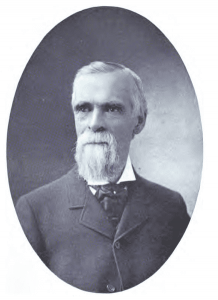What more beautiful manifestation of the power of life than fasting? When we invest a lot of money and time in developing more complex therapeutic techniques and additional drugs with their side effects, fasting brings us back to the humility and simplicity of healing nature.
Yet, fasting needs to be more known and explored for its therapeutic benefits. It is thanks to unhappy patients, adventurous researchers and daring experimenters that the history of fasting has evolved. Indeed, little by little, fasting has become a serious therapeutic tool to be included in the medical arsenal.
Let us thank all these courageous and curious explorers of the living world. The one who have bequeathed us their knowledge of fasting, despite the defiance of skeptics, the attacks of detractors, and the persecutions of the medical establishment.
The history of fasting: the pioneers

To begin with, let’s mention Dr. Edward Dewey, who discovered at the end of the 19th century the powers of fasting when he saw his son cured of violent diphtheria by fasting. He then introduced these passions, although he was considered a dangerous man by his colleagues.

At the same time, Dr. Henry Tanner got rid of his rheumatism and heart and stomach problems by experimenting with a 40-day fast in an unpremeditated way. He then invited the medical world to advance research on fasting by proposing to be followed 24 hours a day for 30 days without food to prove that one comes out of it alive despite the beliefs.
Beginning of the 20th century
Then, at the beginning of the 20th century, the history of fasting continues. Bernard McFadden and Upton Sinclair tried to have the benefits of fasting recognized, unfortunately in vain in the face of the inertia of the medical world.
At the same time, the physician Guillaume Guelpa discovered that patients recover when they lose weight. Moreover, they would recover even faster if they continued fasting on a vegetarian diet. From this observation, he developed rhythmic fasting, which consists of alternating 5 days of fasting and 5 days of a vegetarian diet until the disappearance of the high level of sugar in the blood to counter epilepsy and diabetes. But he will not find any successor to his work.
A little later, fasting gets a more important scope thanks to the work of the hygienist Herbert Shelton in his book The Science and Fine Art of Fasting. This book is still a reference today. Although, these works must be considered in the context of the time.
George F. Cahill Jr. also undertook several research projects on fasting and ketogenic processes.
Fasting countries in history: Germany and Russia
In Germany, Arnold Ehret, the founder of vitalism in dietetics, wrote Rational Fasting, a fascinating work that did not have a great impact.
In Russia, the psychiatrist Yuri Nikolayev treated more than 7,000 patients with psychiatric diseases by fasting. Several of his students have taken up this work and continue to fast thousands of patients in Russia. Today, it is Doctor Sergueï Filanov who spreads the practice of dry fasting. The results are spectacular and attract many people.
In France, two great names have highlighted the benefits of the game: Albert Mosseri and Désiré Mérien.

Internationally, Valter Longo from the University of Southern California and the renowned Buchinger Clinic in Germany are advancing scientific research on this subject. The history of fasting continues…
INSERM
However, fasting is still little studied by scientists. How to explain it? In 2014, the INSERM expert report “Evaluation of the effectiveness of fasting as a preventive or therapeutic practice” concludes that “studies that focus on fasting as a therapeutic practice are still few and their methodological quality is often insufficient and especially limited by the particular dimension of fasting.
Because of its spiritual dimension, the state classifies it among the “holistic” medicines at risk of sectarian derivatives. Obviously, in all forms of practice (professional, artistic, etc.), aberrations can exist. Therefore, it is necessary and responsible to ensure that the organizations that welcome and accompany you are reliable and not influenced by these aberrations.
Fasting: definition
There is not one fast but many fasts, and as many ways to experience them with different objectives and results. So what is the definition of fasting, and what are its different forms?
Fasting is the voluntary deprivation, partial or total, of all food and/or water consumption for a certain period.
We will speak of water fasting when water is allowed. Next, we speak of partial fasting when the subject receives a very limited daily caloric intake, such as the Buchinger technique. Finally, we will speak of dry fasting when the subject ingests neither food nor water.
But fasting is much more than that: it is an explosion of life within us. Fasting is truly a celebration of life. The storm of life that rages within us reminds us of how much we have lost the habit of fasting. Indeed, we are overwhelmed with external demands and food. We have lost the seasonality with these dearth periods and forgotten the spiritual fasts. Fasting reminds us how often we forget this inner life.
It is all these dimensions that we approach throughout our accompaniments…
If you want to learn more about fasting, don’t hesitate to have a look on my dedicated website: Jeûne & Sens
Interested in fasting? Have a look at our other fasting articles:


